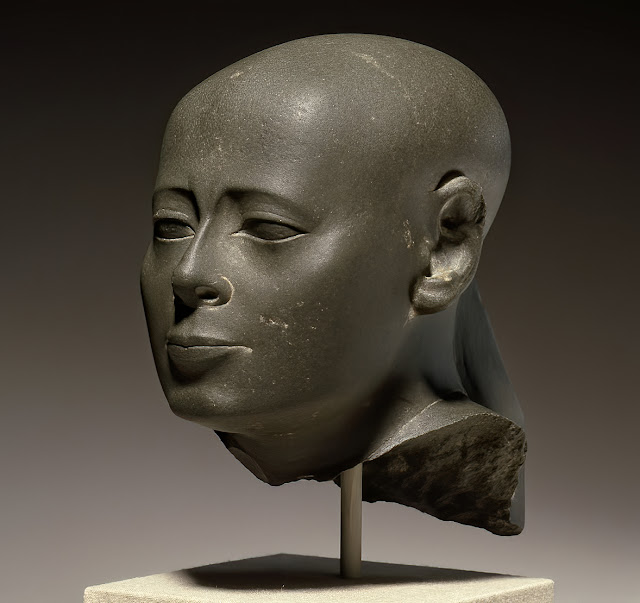Head of a Thirtieth Dynasty Priest of Montu at the Brooklyn Museum in Brooklyn, New York
Head of a Thirtieth Dynasty Priest of Montu at the Brooklyn Museum in Brooklyn, New York. The head of the priest named Wesirwer meaning Osiris Is Great is part of a group of green-stone heads that combine both conventional and naturalistic facial details. Wesirwer's egg-shaped skull and almond eyes are standard elements of fourth-century B.C.E. works, but the serene gaze is a naturalizing element perhaps evocative of Wesirwer's piety. This head was once attached to a statue wearing an Achaemenid period Persian-style garment. This type of garment would have been introduced before Dynasty XXVII circa 525–404 B.C.E., a period of foreign occupation. This probably accounts for the Brooklyn Museum's acquisition of just the head.
Montu was a falcon-god of war in ancient Egyptian religion, an embodiment of the conquering vitality of the pharaoh. He was particularly worshipped in Upper Egypt and in the district of Thebes, despite being a Delta-native, astral deity. A very ancient god, Montu was originally a manifestation of the scorching effect of Ra, the sun — and as such often appeared under the epithet Montu-Ra. The destructiveness of this characteristic led to him gaining characteristics of a warrior, and eventually becoming a widely revered war-god.
Image: Head of a Thirtieth Dynasty Priest of Montu at the Brooklyn Museum in Brooklyn, New York courtesy of the museum. CC BY.




Comments
Post a Comment